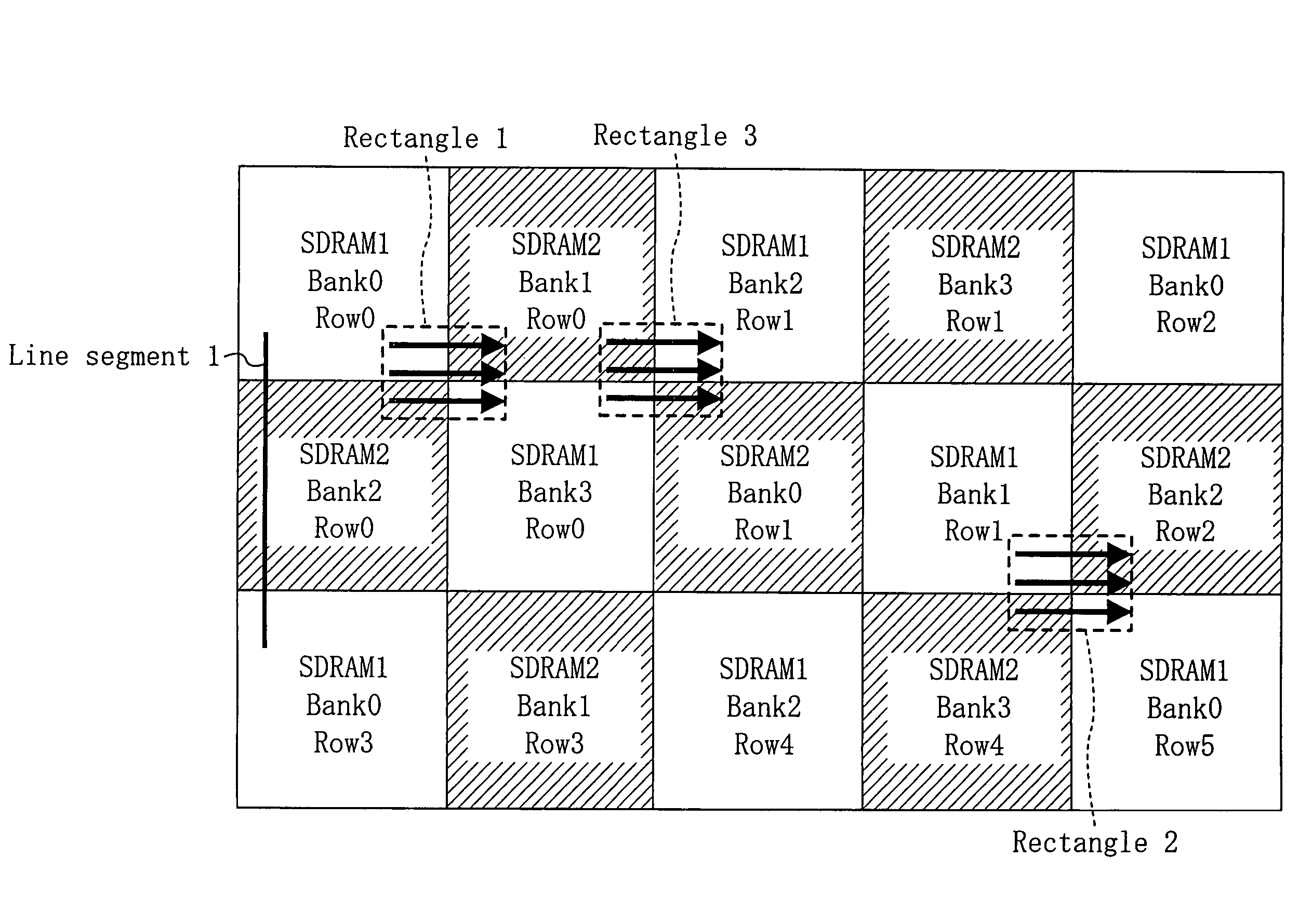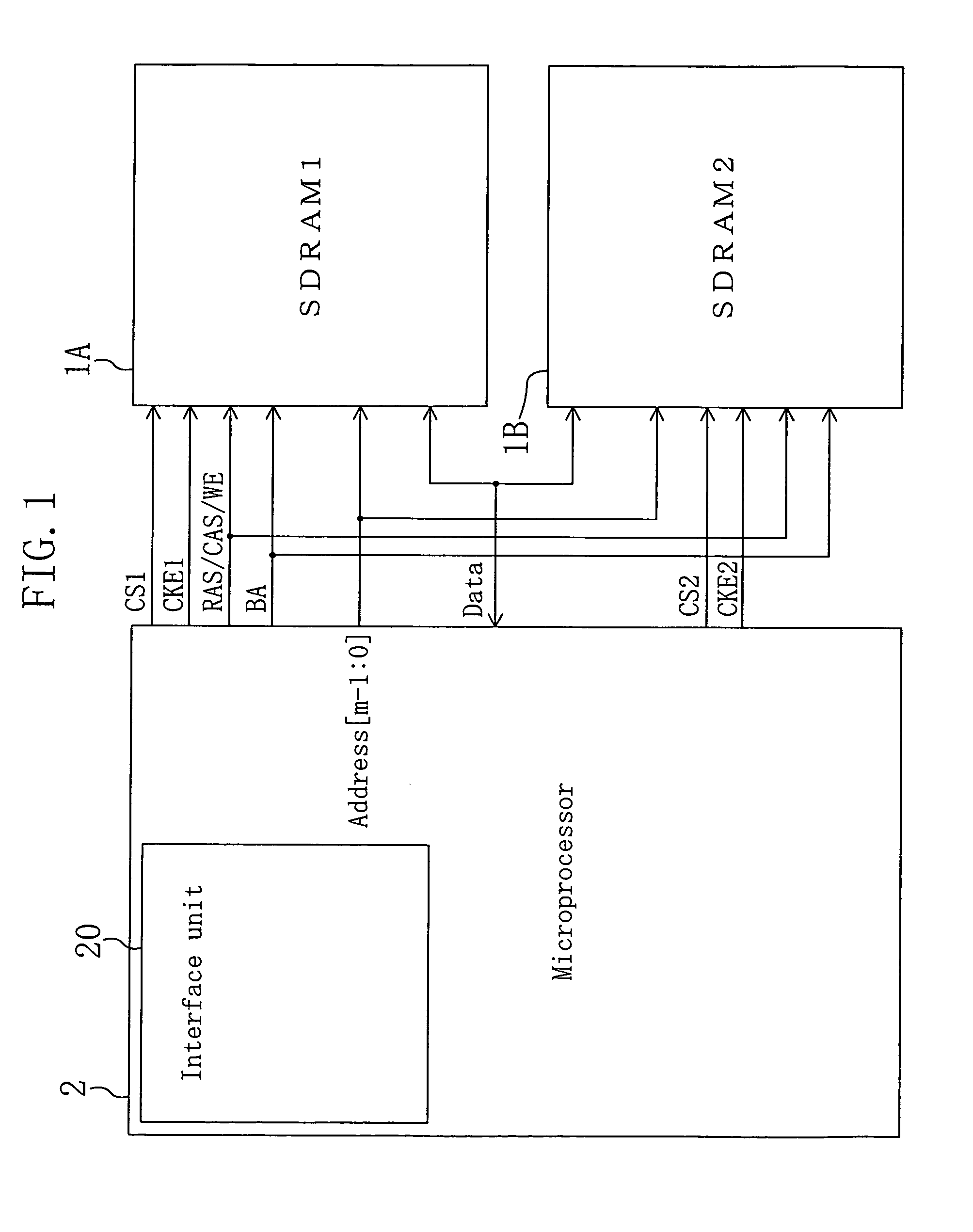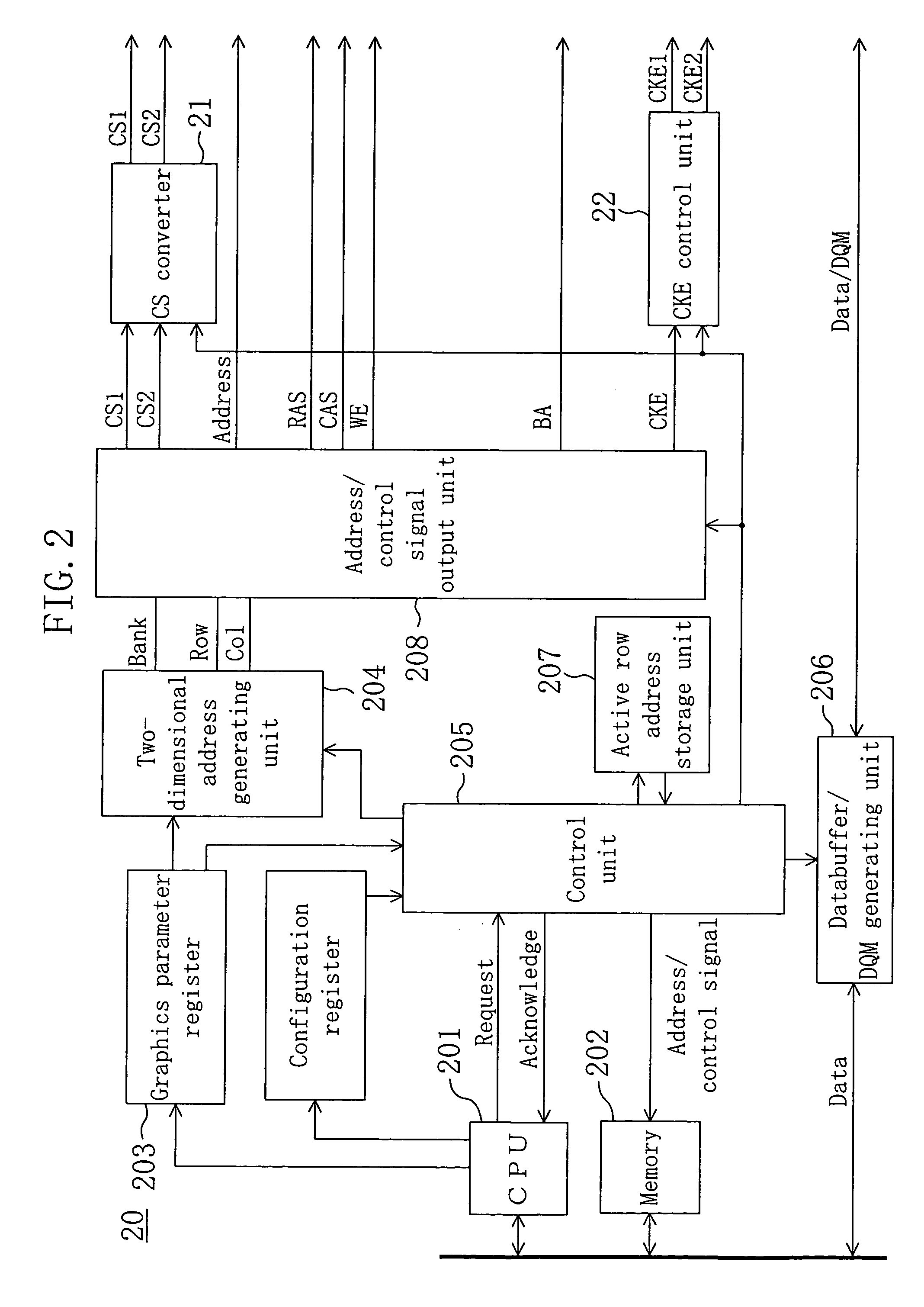DRAM controller for graphics processing operable to enable/disable burst transfer
a dram controller and graphics processing technology, applied in static indicating devices, memory adressing/allocation/relocation, instruments, etc., can solve the problems of significant overhead, increase the refresh time of the sdram access bandwidth, and insufficient technique to solve, so as to reduce the number of cycles required for dram access.
- Summary
- Abstract
- Description
- Claims
- Application Information
AI Technical Summary
Benefits of technology
Problems solved by technology
Method used
Image
Examples
first embodiment
[0097]FIG. 1 illustrates a schematic configuration of a DRAM controller in accordance with a first embodiment of the present invention. In FIG. 1, a first SDRAM 1A (SDRAM1) and a second SDRAM 1B (SDRAM2) are connected to a microprocessor 2. An interface unit 20 provided in the microprocessor 2 assigns a frame-buffer area to the first and second SDRAMs 1A and 1B and accesses the first and second SDRAMs 1A and 1B in accordance with graphics processing such as drawing processing and display processing.
[0098]FIG. 2 is a block diagram illustrating the configuration of the interface unit 20 of FIG. 1. In FIG. 2, components common to those in the conventional configuration shown in FIG. 21 are identified by the same reference numerals and the detailed description thereof will be omitted herein. The reference numeral 21 denotes a CS (chip select signal) converter and 22 denotes a CKE (clock enable signal) control unit. The CKE control unit 22, serving as a burst transfer control unit, outpu...
second embodiment
[0114]FIG. 10 illustrates a schematic configuration of a DRAM controller in accordance with a second embodiment of the present invention. FIG. 11 is a block diagram illustrating the configuration of an interface unit 20B of FIG. 10. In FIGS. 10 and 11, components common to those shown in FIGS. 1 and 2 are identified by the same reference numerals and the detailed description thereof will be omitted herein. In FIG. 11, a BA (bank select signal) control unit 81 outputs individual first and second bank select signals BA1 and BA2 to first and second SDRAMs 1A and 1B, respectively. An AS (address select signal) control unit 82 receives the 0th bit of an address output from an address / control-signal output unit 208 and outputs individual first and second address select signals AS1 and AS2 to the first and second SDRAMs 1A and 1B, respectively. The remaining bits of the address other than the 0th bit are supplied to both first and second SDRAMs 1A and 1B. The address / control-signal output ...
third embodiment
[0129]FIG. 14 illustrates a schematic configuration of a DRAM controller in accordance with a third embodiment of the present invention. FIG. 15 is a block diagram illustrating the configuration of an interface unit 20C of FIG. 14. In FIGS. 14 and 15, components common to those shown in FIGS. 1 and 2 or FIGS. 10 and 11 are identified by the same reference numerals and the detailed description thereof will be omitted herein.
[0130]In FIG. 15, a control signal control unit 111, serving as a command control unit, receives a RAS signal, a CAS signal and a WE signal output from an address / control signal control unit 208, and in order to issue individual commands to first and second SDRAMs 1A and 1B, the control signal control unit 111 outputs control signals RAS1, CAS1 and WE1 and control signals RAS2, CAS2 and WE2 to the first and second SDRAMs 1A and 1B, respectively.
[0131]It is assumed that frame-buffer-area address mapping in this embodiment is performed as shown in FIG. 3 as in the f...
PUM
 Login to View More
Login to View More Abstract
Description
Claims
Application Information
 Login to View More
Login to View More - R&D
- Intellectual Property
- Life Sciences
- Materials
- Tech Scout
- Unparalleled Data Quality
- Higher Quality Content
- 60% Fewer Hallucinations
Browse by: Latest US Patents, China's latest patents, Technical Efficacy Thesaurus, Application Domain, Technology Topic, Popular Technical Reports.
© 2025 PatSnap. All rights reserved.Legal|Privacy policy|Modern Slavery Act Transparency Statement|Sitemap|About US| Contact US: help@patsnap.com



